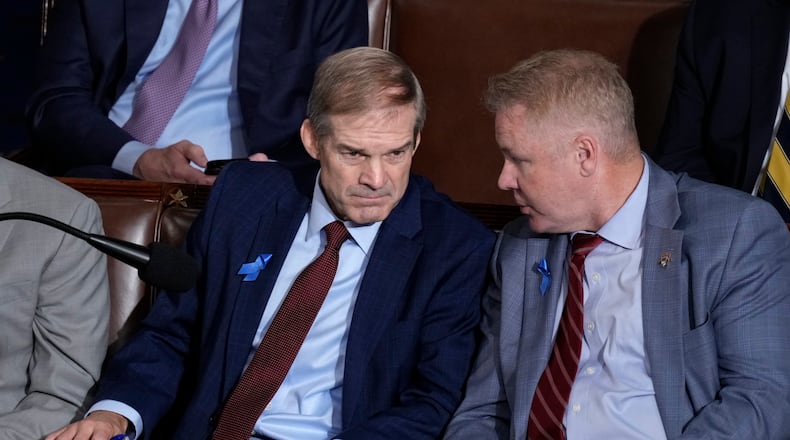“I do not want to see those important funds for our community lost,” said U.S. Rep. Mike Turner, R-Dayton, who has a number of local projects tucked into 2026 funding bills in the House.
While Turner and other Ohio lawmakers have successfully made the case to get their projects included, they remember what happened with government funding for 2025 — when GOP leaders decided to cut out money for thousands of local projects known as earmarks.
A number of Turner’s projects for 2026 are simply repeats from last year, focused on a series of economic development projects in the region. Some of his plans include:
• $3 million for work on Edwin C. Moses Boulevard;
• $2 million for the Wright Dunbar development project;
• $1 million to build senior housing at the Dayton VA;
• $1 million for land acquisition around Wright-Patterson AFB;
• $1 million for “Project Plymouth” in Dayton;
• $1 million for facility improvements at Wright State University.
Turner’s largest request is nearly $8.7 million for repairs on the Germantown, Englewood, and Taylorsville dams which were built in Montgomery County for flood control after the Great Dayton Flood of 1913.
Another bill includes $2 million water infrastructure work in the city of Dayton.
Even some Republicans who are general opponents of earmarks have sponsored plans in some of the House GOP spending bills. For example, U.S. Rep. Warren Davidson, R-Troy, has $2.2 million for a future Exit 26 project on I-75 at Millikin Road, plus $800,000 for sewer improvements in greater Cincinnati.
It’s the same story over in the Senate, where Ohio’s Senators have added in some local projects, with no guarantee that those items will actually get funded in a final spending deal between Congress and the White House.
Both Sen. Jon Husted and Sen. Bernie Moreno have joined to sponsor a $30 million Human Performance Center at Wright-Patterson Air Force Base.
That money was included as part of a broader military construction bill that was approved by the Senate earlier this month. A House-passed measure does not include that extra money for Wright-Patt.
Of the 15 House members from Ohio, only one — U.S. Rep. Jim Jordan, R-Urbana — has no home-state projects in next year’s government funding bills working their way through the House at this time. Jordan was one of 56 House Republicans who stayed away from earmarks in a popular funding bill for highways and housing.
Congress is supposed to finish its government funding work by September 30 of each year — the end of the fiscal year. But lawmakers haven’t met that goal since 1996.
With the House and Senate not conducting any legislative business until September 2, both parties have already been throwing verbal elbows about which side would be to blame for any government shutdown.
When the Congress returns after Labor Day, lawmakers will have four weeks to figure out the 12 funding bills for 2026 — or the House and Senate will have to approve some kind of stopgap temporary funding bill.
No one really knows what’s next.
“A short term (funding plan) may be necessary, but we have to get the full complete bills passed,” Turner said.
About the Author
